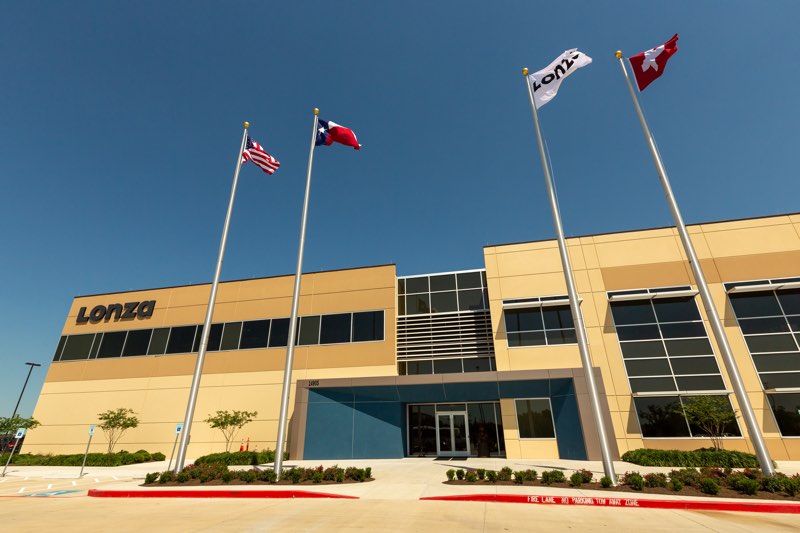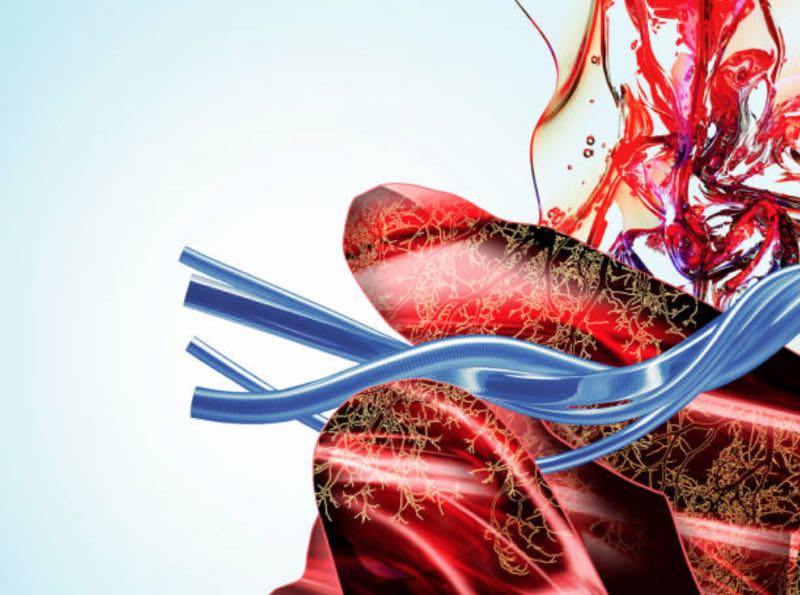"The development of a robust, reproducible, and cGMP-compliant manufacturing process is the cornerstone of success for drug developers in cell and gene therapies (CGTs). Unfortunately, the risks involved in not properly addressing gaps in the manufacturing process are too often underestimated." The words of Behnam Baghbaderani, Global Head of Process Development, Emerging Technologies at Lonza Pharma & Biotech, underpin the complexities in the manufacture of these hi-tech personalised medicines, and the expertise required to succeed.
For Baghbaderani, these risks can result in major setbacks in the transition of the process to manufacturing, recurring failures during manufacturing runs or industrialising the production of the final product.
"Our goal is to ensure developers and researchers are aware of these challenges and have the best chances of taking their therapy to market, ensuring a phase appropriate process development (PD) and bioassay services (BAS), removing the manufacturing (MFG) bottlenecks and reducing their cost of goods (COGs) while preparing for the commercial readiness in advance," he explains.
Baghbaderani points out that in Houston (US), Lonza has constructed state-of-the-art development (PD and BAS) labs and gathered key experts under one roof to enable the best outcome for customers and truly industrialise their process, taking it from concept, pre-clinical, clinical to late-stage and finally to commercial launch.
"Both the viral vector and cell therapy needs are addressed with highly experienced experts in a phase-appropriate manner leveraging process development and bioassay service expertise," he points out.
Manufacturing challenges
The field of cell and gene therapy is rapidly growing, and new technologies such as chimeric antigen receptor (CAR-T), gene modifications, reprogramming and directed differentiation are emerging as revolutionary technologies offering promising solutions for the treatment of devastating diseases such as diabetes, neurodegenerative disorders and cancer. Baghbaderani notes, however, that some of the manufacturing processes in the industry carry quality, quantity and efficiency risks, and challenges.
Some of the manufacturing processes in the industry carry quality, quantity and efficiency risks, and challenges
He explains: "From a quality point of view, the existing open manufacturing processes, for example, are associated with open manipulation steps that increase the risk of contamination. They are carried out under uncontrolled 2D unit operations. Some involve serum-dependent processes with lot-to-lot variability and lack proper cell characterisation strategies.
"From a quantity perspective, these processes include small unit operations with limited yield, lack flexibility and scalability (scale-up or scale-out depending on the application)."
From a quality point of view, the existing open manufacturing processes, for example, are associated with open manipulation steps that increase the risk of contamination
Baghbaderani notes that from an efficiency perspective, the existing open, manual, 2D unit operations are often very labour-intensive and require a large manufacturing footprint, which leads to significantly high manufacturing cost and overall treatment cost.
For Baghbaderani, there are four specific challenges in the manufacturing of a gene therapy product. "Some of the specific challenges in the area of gene therapy include (1) scalability of the manufacturing processes, (2) low productivity and yield of process, (4) lack of flexibility and suboptimal technologies used in the manufacturing of the viral vector products, and (4) access to the analytical methods that can provide accurate measurement of specific unit operations and process steps."
The Lonza expert notes these challenges can significantly impact the quantity and quality of the gene therapy materials generated during the manufacturing process as well as the costs of manufacturing.
These challenges can significantly impact the quantity and quality of the gene therapy materials generated during the manufacturing process as well as the costs of manufacturing
"Overcoming these challenges would allow industrialisation of the gene therapy manufacturing processes and production of clinically and commercially viable quantities of high-quality vectors for cell and gene therapy applications," he warns.
Allogenic applications
Manufacturing allogeneic cell therapy has its own challenges, which arise from the complex processes involved. "At a high level, a typical allogeneic manufacturing process includes several unit operations starting from cell isolation, cell expansion, differentiation (depending on the starting materials), cell harvest and downstream processing, and characterisation and release of the final product," Baghbaderani explains.
He points out that one of the quickly growing allogenic applications is the use of pluripotent stem cells, including human embryonic stem cells and induced pluripotent stem cells (iPSCs) for the generation of specialised functional cells with therapeutic applications.
"Generation of human iPSCs involves reprogramming of somatic cells into induced pluripotent cells, which is a highly manual process, starting from the introduction of transcription factors into starting somatic cells, reprogramming stage and selection of iPSC colonies, expansion and passaging of iPSCs," Baghbaderani notes.

With 300,000 sqft (27,870 sqm), Lonza Houston facility is the largest
dedicated cell-and-gene-therapy manufacturing site in the world
These open, manual steps, says Baghbaderani, could result in contamination, variability in the process yield, significantly high labour, and increasing the production cost. "Besides, without the appropriate in-process controls or monitoring steps, it is harder to ensure a high-quality final product," he says, adding that these problems increase the risks of manufacturing, cost of treatment, and most importantly, present challenges to having a robust and reproducible process. The latter is the first fundamental step for the development of a reliable manufacturing process under current good manufacturing practices.
Autologous cell therapy
Baghbaderani explains that in general, an autologous manufacturing process includes several unit operations, similar to those in the allogeneic therapy, starting from cell isolation, cell expansion, activation, gene modification, expansion, cell harvest and downstream processing, and characterisation and release of the final product. "Gene modification can be done through viral modification or non-viral modification," he points out.
The non-viral modification, Baghbaderani says, would require specific unit operations, such as nucleofection technology — for instance Lonza 4D Nucleofector — to carry out the gene modification step.
"Isolation of peripheral blood mononuclear cells (e.g. T cell isolation for autologous application using CAR-T) is also a manual process that is often carried out using manual washing and ficolation steps," he explains.
For Baghbaderani, open, manual steps, variability in the process yield, lack of control or monitoring process variables all carry the risk of impacting the critical quality attributes of the final product.
"It is difficult to establish a robust and reproducible process in the presence of these open, manual steps," he says, noting that this, in turn, increases the risks of manufacturing, cost of treatment, and negatively impacts the critical quality attributes of the final product. "Therefore, we advocate closing open processes and automating the unit operations as much as possible. This is a collaborative process where we work with our clients very closely," he says.
CGT manufacturing: The Lonza approach
Baghbaderani reveals that the expert teams at Lonza take a step-by-step approach towards the development of manufacturing processes for cell and gene therapy applications.
"This is truly a phase appropriate process development exercise based on establishing a deep understanding of our customers' needs considering their timeline and phase of application," he says. Baghbaderani notes the company also collaborates very closely with customers, and in a sense of partnership. "We involve them in each stage or phase of the project."
These step-by-step phases include:
- Diagnose to de-risk: The first key step is a feasibility study aiming at the evaluation of the manufacturability and establishing the existing baseline process prior to the start of process optimisation and development activities. Depending on the duration of the process, the team carries out two feasibility runs using existing client processes focusing on understanding key unit operations, process parameters, and quality attributes of the final product. At the end of this step, a joint risk assessment exercise is performed with the client to define the key risks from a manufacturing perspective, followed by a proposal for the required process optimisation/improvement steps along with the assays.
- Process and analytical development: The focus of this step is to address the risks identified in Step I; establish a robust and reproducible MFG process that meets the GMP design considerations. The focus is on examining critical process parameters in relationship with their respective Critical Quality Attributes (CQA). In this context, the process is we dissected into different unit operations. The aim is to implement appropriate in-process controls and in-process monitoring techniques along with innovative technologies to minimize the open, manual unit operations.
- Deliver to GMP: While Lonza works with in-house manufacturing science and technology (MSAT) team early on during step 2 to ensure a detailed understanding of the GMP design consideration, the company also continues to support the MSAT team in step 3 with tech transfer of the MFG process to GMP. In this respect, Lonza offers technical support in the preparation of production documents and batch records, training operations team, technical investigations, and any specific skills that require PD and BAS expertise.

Behnam Baghbaderani
Global Head, Process Development
Cell and Gene Technologies
Lonza Pharma & Biotech
Q&A: Manufacturing best practice
What best practices does Lonza employ in the development of allogeneic therapies using iPSCs or other stem cells?
There are a wide range of strategies that we apply in early clinical development phase to address these challenges through (1) carefully selecting the starting somatic cells, reprogramming method, and cell culture system used for generation and expansion of iPSCs, (2) development of 3D bioreactor protocols for expansion and differentiation of stem cells, and (3) implementing appropriate in process control and characterisation methods in the entire manufacturing process.
We take a systematic approach towards the product characterisation and quality by focusing on identifying the CQA of the process, understanding their relationship with the critical material attributes (CMA) and critical process parameters (CPP).
Equally important, we also pay specific attention to the analytical methods and assays that are required to incorporate in the manufacturing process either as in-process monitoring and characterisation assays or methods used to make a decision or release the final products.
What are the main bioprocessing and upscaling challenges for allogeneic cell therapy products and how does process development address these challenges?
Besides the open and manual unit operations we see with allogeneic cell therapy processes, some of these processes are also developed using a 2D cell culture system, and this is particularly problematic due to lack of flexibility and scalability.
Different 2D cell culture systems, including Cell Factories (Thermo Fisher Scientific, MA, US), Cell Stack, and HyperStacks (both Corning, NY, US), are available to increase the scale and address the yield and cell number requirements for cell therapy applications.
These large scale 2D cell culture systems have the potential to create significant hurdles to overcome for developers down the road as they continue on the path to commercialisation, such as significantly high processing time, increased medium and material requirements, highly labour-intensive nature of the process, increased manufacturing footprint, heterogeneity of the cells manufactured in multiple vessels and, most importantly, lack of in-process control and monitoring methods.
To address these challenges, it is important to develop scalable, computer-controlled 3D bioreactor protocols for expansion and differentiation of allogeneic cell therapy products during early clinical development phases.
We can use different single-use bioreactor systems including wave, continuous stirred-tank reactor or vertical wheeled bioreactors. Our bioprocessing experts perform extensive engineering studies, for example, the effect of hydrodynamics and impeller design, scales and computer-controlled systems to monitor and control physiological parameters in different mode of operations, including batch, fed-batch and perfusion. And we can use appropriate cell culture solutions and bioreactor systems for anchorage-dependent or anchorage-independent cell types.

What step in gene therapy manufacture could benefit most from process development?
The manufacturing of gene therapy products involves multiple unit operations, from upstream and viral vector generation to downstream, purification and recovery of the final viral product. These steps should be properly linked to each other based on process specifications and predefined set of design criteria.
One of the most important aspects of the development of the manufacturing process is to establish the relationship between critical process parameters (CPP) and critical quality attributes (CQA) of the final product.
Implementation of appropriate analytical methods including in process control and in-process monitoring methods in the process would be critical to explore each process parameter in relationship with the quality attributes of the intermediate or final product. This would eventually allow the establishment of a robust and reproducible process that meets the GMP design considerations.
What is the Lonza approach toward the automated development of gene therapies?
As mentioned earlier, the successful production of viral vector products, with high yield and recovery, largely depends on establishing a scalable, robust and reproducible manufacturing process along with the implementation of appropriate in-process control and monitoring steps.
At Lonza, we rely on our bioprocessing expertise and innovative technologies to move towards more automated, in-line computer-controlled manufacturing processes for the development of the manufacturing process for gene therapy products.
In particular, we look for opportunities for scalable technologies in the upstream and downstream processes to minimise run-to-run variability and build into our processes in-line measurements for optimal operating ranges.
For instance, we focus on replacing adherent cell culture systems with scalable, computer-controlled suspension bioreactor system in upstream for production of viral vector.
We believe it is important to consider the development of automated cells culture systems or transition of existing open, manual protocols into computer-controlled, automated processes at the early clinical development phase
Importantly, we pay specific attention to the development and implementation of appropriate analytical methods to ensure each process step is optimised, and the manufacturing process is robust and reproducible.
How could autologous therapies benefit from the development of an automated process?
We believe it is important to consider the development of automated cells culture systems or transition of existing open, manual protocols into computer-controlled, automated processes at the early clinical development phase.
Also, currently available technologies with automation capabilities need to be further improved to cover the entire autologous manufacturing process including selective isolation of specific population of cells, priming, activation, genetic modification (viral or non-vital manipulation), cell expansion, harvest and downstream processing.
The transition of the process into automated unit operations can be done using an end-to-end approach if fully automated manufacturing process is available, or via a modular approach, step-by-step transitioning of the manual steps into automated unit operations.
During the process optimisation, we can develop or improve different unit operations in the manufacturing process by comparing and evaluating different technologies. For instance, instead of using an open, manual Ficoll separation step, we can take a modular approach and develop a robust cell isolation step using one or a combination of multiple automated cell wash and isolation systems.
What technological solutions do you use for different challenges in cell and gene therapy process development?
The field of cell and gene therapy involves a wide range of autologous and allogenic applications, each requires addressing different challenges, including scale-out vs scale-up.
Different cell types have unique characteristics, for instance, cell suspension vs cell attachment require different unit operations to develop clinically viable products, such as choice of gene modification technology or directed differentiation process.
They may have distinct critical quality attributes, defined by identity, viability, functionality and safety assays. Therefore, it is necessary to have different technological solutions to offer a wide range of applications and customers.
Technology and resources
At Lonza, Baghbaderani says, the company has developed processes using a variety of technologies to address process needs including magnetic bead-based cell isolation step, various cell harvest and washing systems, 2D and 3D cell expansion methods, viral- and non-viral- based gene modification methods, cell harvest and concentration methods, cryopreservation systems, as well as a wide range of cell characterisation and testing methods, such as latest flow cytometry systems, molecular biology and PCR methods, cell counts and viability systems, ELISA-based assays and other cell-based assays.
"In essence, as the cell and gene therapy field matures, the issue of industrialisation will be a more pressing problem as we aim to treat more and more patients globally," he warns.
"Our approach to process development is to remain technology agnostic, yet to ensure we de-risk the process with the end in mind, developing processes and testing methods that are robust and scalable so that the ultimate cost of goods can be sustained by the market as the therapy gets commercialised," Baghbaderani concludes.





